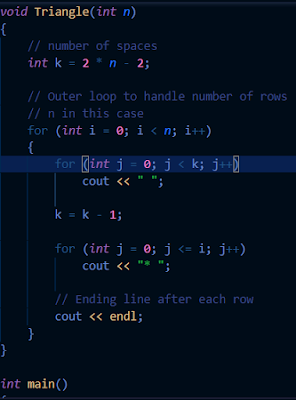FOUNDATION OF THE FOURTH INDUSTRIAL REVOLUTION
THE ART OF COMPUTATIONAL THINKING
COMPUTATIONAL THINKING & WHY ?
1. Learn to solve problems the method the scientist and engineers uses to solve problems.
2. Want to be the part of programming, make computers understand to do task and build one.
3. Want to learn about the process of thinking, how problems are solved and apply them to solve problems more effectively also learn how to make INFORMED DECISIONS.
4. The discipline to computational thinking and problem solving also unleash individuals creative thinking.
THE BASICS FOR THE FOURTH INDUSTRIAL REVOLUTION.
Everybody should learn how to program a computer because it teaches you how to Think.
--Steve jobs--
Computational thinking signifies the thought process involved in solving problems in a more informed manner in ways that computers can understand and interpret it and form binaries.
Computational thinking involves models such as abstraction, decomposition, algorithmic thinking, pattern recognition, and many more.
Terms to get familiarize
Logical thinking: In computational thinking, logical reasoning is about logical, Boolean expression.
Application of logical expressions in a chain of arguments to demonstrate what is true and false and finally come to a solution.
Algorithmic thinking: Sequence of finite instructions that describes a process and with a specific output. The popularly know building blocks of algorithms are (sequence, iteration, selection).
Abstraction : Abstraction is the simplification of complex ideas into a compact form, filtering of the relevant complex details into a compact simple form.
Decomposition: Breaking down the problems into simpler, manageable, and easier to deal with, decomposition is the divide and conquer strategy.
one of the well-known examples of decomposition is Recursion.
Pattern recognition: Discovering shared characteristics within the same ideas, recognizing a similarity making it a rule to follow to solve similar problems, and finally to execute.
Data collected from statistics, the analysis applied and pattern is recognized for key decisions to take.
Practical Gateways to Computational thinking insights
1. Computational thinking in practical scenarios means solving problems programmatic ally, such as the use of conditionals, iterations, symbol representation.
2. Computational thinking is not just only solving problems but also a discipline to solve problems efficiently(Time and space complexity ) i.e efficient use of the resources popularly know as Space(usage of memory) && Time(minimum time for execution of programs).
Practice makes perfect
Try out interdisciplinary fields. INTERDISCIPLINARY COMPUTATIONAL THINKING


Comments
Post a Comment